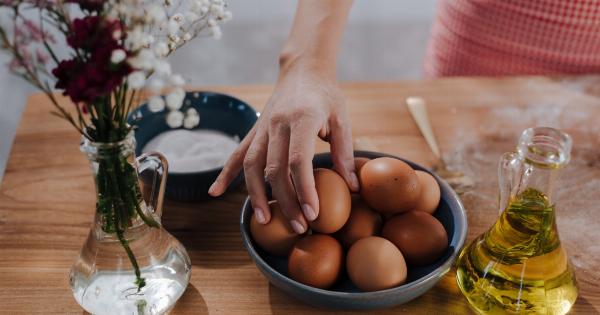Virgin olive oil is often touted for its numerous health benefits and rich flavor profile. It is widely used in cooking and salad dressings, and its consumption is associated with a lower risk of various diseases.
However, it is important to understand that the quality of olive oil can be influenced by the cooking process.
The Composition of Olive Oil
Olive oil is primarily composed of triglycerides, which are made up of three fatty acids linked to a glycerol molecule.
The specific composition of fatty acids in olive oil varies depending on different factors, such as the olive variety, growing conditions, and harvesting methods.
One of the key types of fatty acids found in olive oil is oleic acid, which constitutes the majority of its composition. Oleic acid is a monounsaturated fat known for its positive effects on heart health.
Other fatty acids present in smaller quantities include linoleic acid, palmitic acid, and stearic acid.
The Science Behind Cooking
Cooking involves subjecting food to high temperatures, which can induce various chemical changes.
When heat is applied, it leads to the breakdown of delicate compounds in olive oil, causing alterations in its flavor, nutritional composition, and even potential health benefits.
Oxidation and Heat Stability
Oxidation is one of the primary chemical processes that occur during cooking, and it can have a detrimental effect on the quality of olive oil.
As the oil is exposed to heat and oxygen, it undergoes oxidation, resulting in the formation of free radicals and breakdown products.
The unsaturated fatty acids present in olive oil are particularly susceptible to oxidation. Heating the oil accelerates this process, leading to the formation of off-flavors and a decline in nutritional value.
Additionally, oxidation can compromise the health benefits associated with olive oil consumption, such as its anti-inflammatory and antioxidant properties.
Heat stability is another important factor to consider when cooking with olive oil. Different oils have varying heat stability levels, which refer to their ability to withstand high temperatures without breaking down.
Extra virgin olive oil, which is considered the highest grade and retains the most nutrients, has a relatively low heat stability.
As the smoke point of olive oil is around 410°F (210°C), using it for high-temperature cooking methods such as deep frying or searing can exceed its heat stability and lead to the degradation of its beneficial compounds.
The Role of Chlorophyll and Carotenoids
The vibrant green color of extra virgin olive oil is primarily attributed to the presence of chlorophyll and carotenoids. These natural pigments not only contribute to the visual appeal of the oil but also have potential health benefits.
However, when olive oil is exposed to heat, the chlorophyll and carotenoids can undergo chemical reactions and degrade. This can result in a change in color, from the vibrant green hue to a more yellowish tone.
Although the nutritional content may not be drastically affected, the alteration in color can be an indicator of compromised quality due to thermal damage.
Minimizing Damage during Cooking
While cooking with olive oil can lead to some degradation, there are ways to minimize the damage and retain its beneficial properties:.
- Use lower cooking temperatures: Cooking at lower temperatures can reduce the rate of oxidation and minimize the breakdown of beneficial compounds in olive oil.
- Avoid reusing heated oil: Repeated exposure to high heat can accelerate the degradation of olive oil. It is advisable to discard oil that has been heated multiple times.
- Choose the right cooking method: Certain cooking methods, such as sautéing, stir-frying, or light frying, involve shorter cooking times and lower temperatures. These methods are less likely to cause significant damage to the oil.
- Consider alternative cooking oils for high-temperature cooking: For high-heat cooking methods, oils with higher smoke points, such as avocado oil or coconut oil, may be more suitable.
Conclusion
While virgin olive oil is a healthy and flavorful option for cooking, its quality can be affected by the cooking process.
The science behind how cooking damages virgin olive oil lies in the oxidation and heat stability of its fatty acids, as well as the degradation of chlorophyll and carotenoids. By understanding these factors and employing appropriate cooking techniques, it is possible to minimize damage and reap the benefits of this precious oil.




























